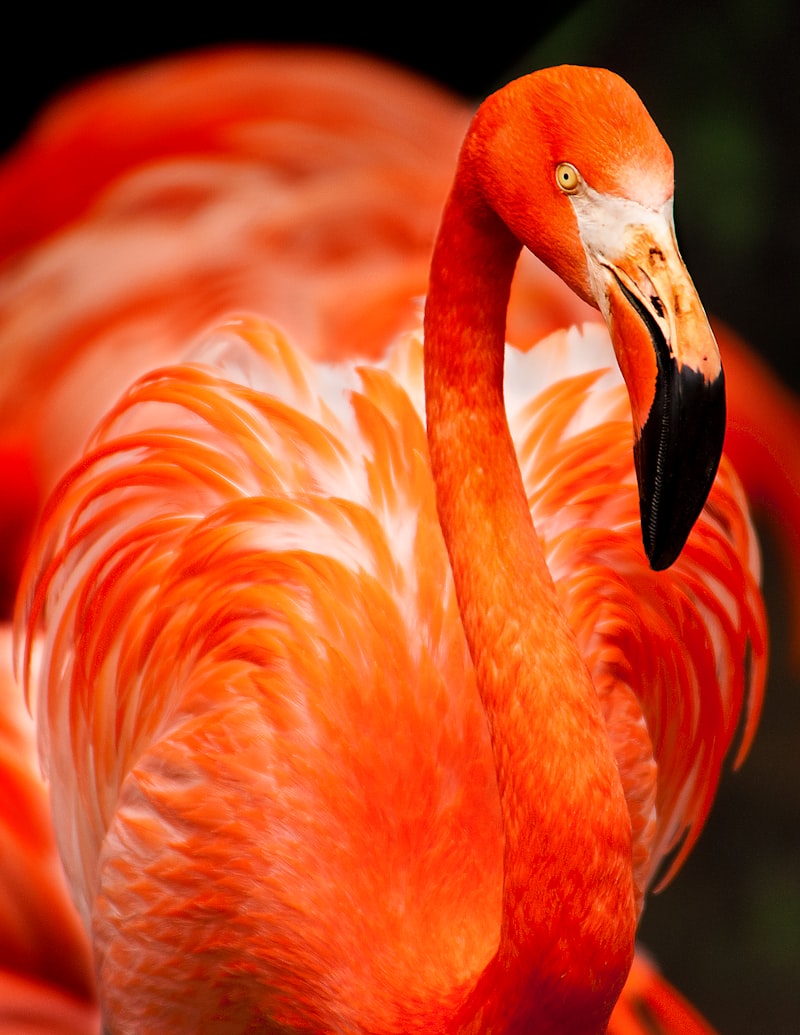Imagine soaring above the blazing sands, where every breath of air feels like a gulp of hot soup. Desert birds, like the iconic roadrunner or the majestic falcon, have evolved remarkable strategies to cope with such extreme conditions. One of their standout adaptations lies in their ability to regulate body temperature efficiently. Unlike humans who sweat to cool down, these birds have evolved to minimize water loss through specialized breathing techniques and efficient insulation provided by their feathers.
One key physiological response these birds exhibit is their ability to enter a state of controlled hypothermia during the hottest parts of the day. This means they lower their body temperature slightly to conserve energy and reduce the need for water. It’s like putting themselves on power-saving mode, ensuring they can endure the relentless desert sun without overheating.
Their respiratory systems are also finely tuned for desert life. Desert birds have adapted to breathe more efficiently, extracting oxygen from the thin, hot air with minimal water loss. This adaptation is crucial because losing too much water through respiration could quickly lead to dehydration in such arid environments.
Another fascinating adaptation is seen in their kidneys. Desert birds have highly efficient kidneys that can concentrate their urine, allowing them to excrete waste with minimal loss of water. This adaptation is akin to having a supercharged water recycling system in their bodies, ensuring every drop counts in the harsh desert environment.
In essence, the physiological responses of desert birds to heat stress showcase nature’s incredible ability to adapt and thrive in even the harshest conditions. Their adaptations highlight the delicate balance between energy conservation, water management, and temperature regulation that allows these avian wonders to call the desert their home.
Survival Strategies Unveiled: How Desert Birds Beat the Heat
Central to their survival toolkit is an intricate system of heat regulation. Desert birds have adapted physiologically to minimize heat absorption and maximize heat dissipation. Their plumage, often light-colored, serves as a natural sunshade, reflecting the harsh sunlight away from their bodies. This adaptation helps maintain their internal temperature within survivable limits.
Moreover, desert birds are masters of hydration management. Water sources are sparse in these arid regions, so these birds have developed efficient ways to conserve moisture. They possess highly concentrated urine and can limit water loss through respiration and excretion. Some species, like the sandgrouse, have even evolved to fly long distances to bring water back to their chicks, demonstrating remarkable parental dedication and adaptation.
In addition to physical adaptations, behavioral strategies also play a crucial role in their survival. Many desert birds are crepuscular or nocturnal, choosing to be active during the cooler parts of the day when temperatures are more tolerable. This behavioral shift helps them conserve energy and avoid the intense midday heat that could otherwise prove fatal.
Furthermore, the ability to find shelter is key. Desert birds are adept at locating microhabitats that offer shade and cooler temperatures during the hottest hours. They utilize rocky crevices, burrows, or even the shadow of vegetation to escape the sun’s relentless rays, showcasing their resourcefulness in adapting to their harsh environment.
In essence, the survival strategies of desert birds are a testament to nature’s incredible adaptability. Through a combination of physiological adaptations, behavioral adjustments, and instinctual behaviors, these birds have unlocked the secrets to thriving in one of Earth’s most challenging ecosystems. Their ability to beat the heat serves as a compelling example of evolution at its finest, where each adaptation contributes to their remarkable success in the unforgiving desert landscapes.
Adapt or Perish: Inside the Resilience of Desert Bird Physiology
One of the most striking features of desert birds is their ability to conserve water. Unlike their counterparts in more temperate regions, desert birds have developed highly efficient kidneys that minimize water loss. They excrete highly concentrated urine and produce dry feces, thereby preserving precious fluids within their bodies.
Another key adaptation is their ability to regulate body temperature in extreme heat. Desert birds, such as the iconic roadrunner or the majestic falcon, have evolved specialized respiratory systems that allow for efficient cooling. By panting and adjusting their metabolic rates, they can maintain a stable internal temperature even when external conditions are scorching.
Feathers also play a crucial role in desert bird survival. These feathers are not just for flight but also serve as excellent insulation against the intense desert sun. Some desert birds have adapted unique feather structures that reflect sunlight, reducing heat absorption and preventing overheating.
Moreover, desert birds have adapted their foraging behaviors to the scarcity of resources. They are opportunistic feeders, capable of surviving on a variety of seeds, insects, and even small reptiles or mammals when available. Their ability to locate and exploit ephemeral food sources is essential for their survival in unpredictable desert environments.
From Fluff to Feathers: Evolutionary Insights into Desert Bird Heat Tolerance
Ever wondered how desert birds manage to thrive in scorching temperatures that would leave most creatures parched? It’s a marvel of evolution, where adaptation has sculpted these avian species into masters of heat tolerance, transforming from fluffy chicks into resilient feathered adults.
In the arid landscapes where water is scarce and temperatures soar, desert birds face a constant battle against dehydration and overheating. Their journey from fluffy downy chicks to fully feathered adults is not just a physical transformation but a testament to their evolutionary prowess.
During their early days, fluffy down feathers provide essential insulation, trapping air close to their bodies to retain heat and maintain a stable body temperature. As they grow, these downy feathers give way to sleek, streamlined feathers that serve a dual purpose: regulating body temperature and enabling efficient flight.
But it’s not just about shedding fluff for feathers; it’s about adapting to the harsh realities of desert life. These birds have developed specialized physiological and behavioral adaptations to beat the heat. From adjusting their metabolic rates to seeking shade during the hottest hours, every aspect of their biology is finely tuned to maximize survival in extreme conditions.

Feathers play a crucial role in this survival strategy. Beyond flight and insulation, feathers act as natural sunscreens, shielding the birds from harmful UV rays and reducing heat absorption. This adaptation helps them stay cool and conserve precious water, a lifeline in desert ecosystems.
Moreover, desert birds have evolved efficient cooling mechanisms. Some species exhibit unique behaviors like gular fluttering, where they rapidly vibrate their throat muscles to increase airflow and dissipate excess heat. Others have adapted desert-specific nesting habits, such as digging burrows or nesting in shaded rock crevices, providing further protection from the relentless sun.
In essence, the transition from fluffy down to sleek feathers symbolizes more than just a physical change; it embodies the remarkable journey of adaptation and survival in one of Earth’s harshest environments. Desert birds stand as living examples of nature’s ability to innovate and thrive, showcasing how evolution shapes life to conquer even the most formidable challenges.
Secrets of Endurance: Unraveling Heat Stress Resilience in Desert Avifauna

Imagine a world where the sun reigns supreme, baking the earth with relentless intensity. Here, desert birds like the sandgrouse and the desert lark thrive, defying the odds stacked against them. Their secret lies in a combination of physiological adaptations and behavioral strategies honed over millennia.
Physiologically, these birds have evolved specialized mechanisms to cope with heat stress. Their bodies are efficient at conserving water, crucial in arid environments where every drop counts. By minimizing water loss through efficient kidney function and concentrating their urine, they maintain vital hydration levels even in scorching conditions.
Behaviorally, desert avifauna exhibit remarkable adaptations. They are early risers, taking advantage of the cooler dawn hours to forage and replenish energy reserves. During the heat of the day, they often seek shade under bushes or rocks, minimizing exposure to direct sunlight. Some species, like the sandgrouse, have developed unique strategies such as carrying water to their young by soaking their belly feathers—a behavior known as “belly-soaking.”
Metaphorically speaking, these desert birds are akin to endurance athletes of the avian world, navigating their environment with precision and tenacity. Their ability to adapt to harsh conditions parallels the resilience needed to endure life’s challenges.
Thermoregulation Tactics: The Marvels of Desert Bird Physiology
One of the most striking tactics employed by these avian marvels involves their specialized heat exchange mechanisms. Desert birds possess intricate nasal passages that function as efficient heat exchangers. As they breathe in the hot desert air, these passages cool the air before it reaches their lungs, thereby reducing the overall heat load on their bodies. This adaptation not only helps in maintaining their internal temperature within optimal ranges but also conserves precious body fluids that would otherwise be lost through excessive panting.
Furthermore, desert birds have evolved unique behavioral strategies to cope with extreme temperatures. During the scorching daylight hours, many species of desert birds, such as the iconic sandgrouse, minimize their activity and seek shelter in the shade of rocks or vegetation. By reducing their exposure to direct sunlight, they effectively lower their body temperature and conserve energy.
At night, when temperatures plummet, desert birds face an entirely different challenge. To combat the cold, these birds often fluff up their feathers to create insulating air pockets close to their bodies. This fluffy layer acts as a thermal blanket, trapping heat generated by their metabolism and minimizing heat loss to the surrounding cold desert environment.
In essence, the thermoregulatory adaptations of desert birds exemplify nature’s ingenuity in overcoming extreme environmental challenges. By combining physiological adaptations such as specialized nasal heat exchangers with behavioral tactics like seeking shade and fluffing up feathers, these birds not only survive but thrive in one of the harshest habitats on Earth.
Frequently Asked Questions
How do desert birds prevent dehydration in hot desert environments?
Learn how desert birds prevent dehydration in hot desert environments through specialized physiological adaptations such as efficient water retention, minimizing water loss through excretion, and behaviorally selecting cooler microclimates.
What are the long-term impacts of heat stress on the health and survival of desert bird populations?
Explore the profound effects of heat stress on desert bird populations, detailing long-term impacts on their health and survival. Understand how prolonged exposure to high temperatures challenges their physiological adaptations and habitats, influencing population dynamics and biodiversity in arid ecosystems.
How do desert birds regulate their body temperature in extreme heat conditions?
Desert birds regulate their body temperature in extreme heat conditions through various adaptations. They reduce heat gain by seeking shade during the hottest times, using their specialized feathers to reflect sunlight, and minimizing activity during peak heat. To dissipate heat, they pant and increase blood flow to bare skin areas like their legs. These strategies help them maintain a stable body temperature despite harsh desert environments.
What are the primary physiological adaptations that help desert birds cope with heat stress?
Learn about the primary physiological adaptations that desert birds have developed to manage heat stress efficiently.
What role does evaporative cooling play in the heat tolerance of desert birds?
Evaporative cooling is crucial for desert birds’ heat tolerance. By dissipating excess heat through evaporative processes such as panting and skin surface moisture, these birds maintain optimal body temperature levels essential for survival in hot desert environments.


